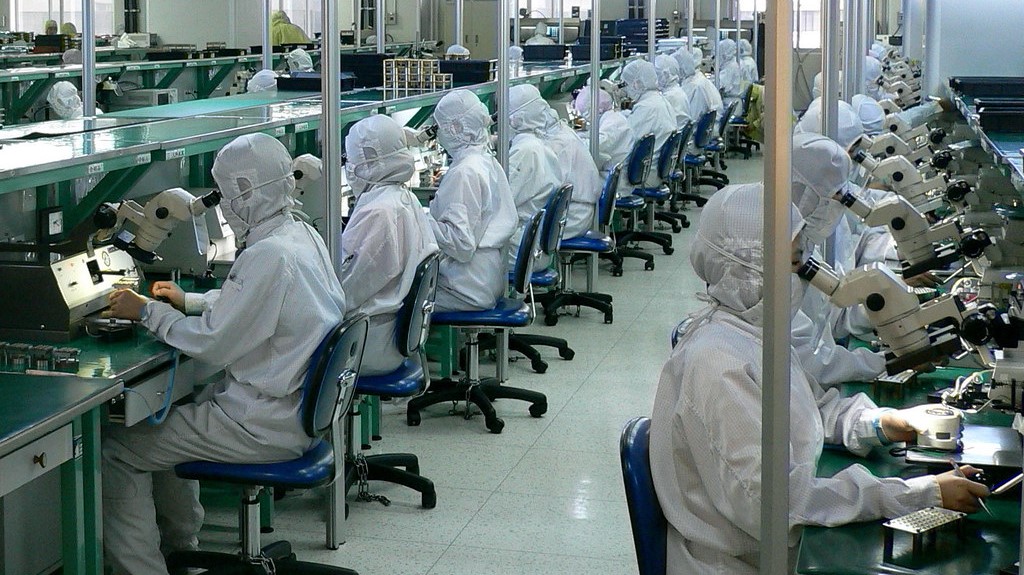Shortage of workforce hits India's smartphone output and delivery
Laptops and tablets are scarce too

Shortage of deployable workforce has caused manufacturing units making smartphones and laptops and peripherals to operate at one-third their total capacity. And most of the big names including Apple, Xiaomi and Oppo are facing supply issues due to this.
A news report quoted unnamed senior industry executives to suggest that operating plants of the above companies, Realme and Vivo were at 30-35% capacity. They said even warehouses were finding it tough to function smoothly, given the social distancing norms in play across the country.
As a result of the slow pace of production and distribution, retailers of smartphone brands have been unable to meet the demand for entry-level models that has witnessed a surge in the post-Covid-19 markets across India.
- Best value for money phones under Rs 20,000 in India for June 2020
- New iPhone 12: Everything you want to know
- Check out our review of the new OnePlus 8 smartphone
- Realme X3 series: Leaks, specs and launch date
Demand is for entry-level phones
The Economic Times quoted Arvinder Khurana, president of the All India Mobile Retailers Association to suggest that smartphones in the sub-15,000 rupees category were not to be found in stores and even on eCommerce platforms. There are no supplies at a time when there is maximum demand in this segment, he said.
At the other end of the spectrum are the premium products such as MacBooks and iPads where Apple's local supply chain is facing a challenge from the delays in the government departments. Customs clearance and transportation to warehouses for imported products is taking longer due to shortage of staff across the board.
For brands such as Oppo, things haven't really moved as their Greater Noida plant remains shut after a few workers were recently found infected. The plant manufacturers smartphones for Oppo, Realme and OnePlus at this facility.
Did smartphone companies miss a trick?
Senior research associates at a Bangalore-based analytics firm say the entire blame cannot be laid on the lack of human resources. When the lockdown norms were being relaxed, companies knew what they were facing up to as the government had specified that production would have to carry on with one-third or half the resources.
Sign up for breaking news, reviews, opinion, top tech deals, and more.
However, the shortage that we are witnessing in one price segment of the smartphones should have been anticipated by the companies themselves. At a time when even the larger companies aren't assuring against job losses, why would anyone seek out a costly smartphone? If it is for replacing an old phone, they would rather prefer to wait till the economy shows signs of recovery than go and invest Rs.45,000 in a device, the research associate said.
The AIMRA has already requested the brands to prioritise production based on the demand indicators which is today skewed towards cheaper phones. Some others like Xiaomi India are reaching out to the local authorities to secure their support towards increasing the number of staff allowed in a factory even while ensuring safety norms.
Smartphone Shipments to Suffer Annual Decline by 14.6% in 2020: GartnerRead More: https://t.co/2ydS5eqUhh#1stglobalmobilitysummit #5g #5... pic.twitter.com/qv22kmZIWQMay 26, 2020
The way ahead
The story is pretty similar with laptops and tablets too. The work-from-home trend has resulted in higher demand for cheaper tablets, ostensibly from those wanting their own viewing screen for watching the video streaming platform of their choice instead of having to share television time with the family. So, why go for a 6th generation iPad (buy it here) when a Lenovo Tab M10 (click to buy) would suffice the purpose!
Maybe it would be a good idea for manufacturers to identify demand trends before going headlong into the production process as they could face a scenario of unfulfilled demand sitting on top of unsold inventories.
Via: Economic Times

A media veteran who turned a gadget lover fairly recently. An early adopter of Apple products, Raj has an insatiable curiosity for facts and figures which he puts to use in research. He engages in active sport and retreats to his farm during his spare time.